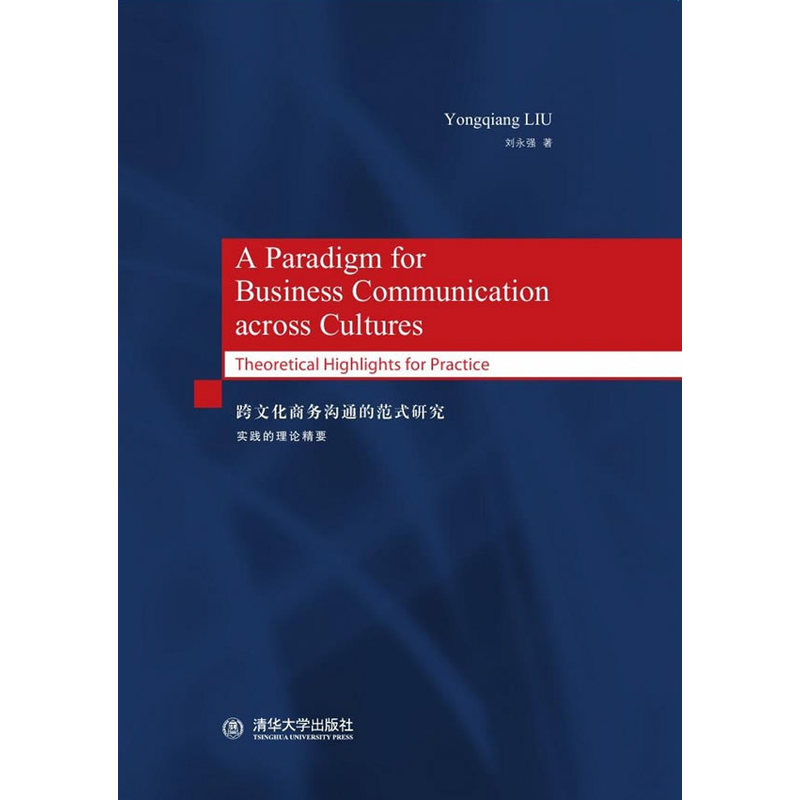暂无评论
图文详情
- ISBN:9787302422594
- 装帧:暂无
- 册数:暂无
- 重量:暂无
- 开本:16开
- 页数:339
- 出版时间:2015-12-01
- 条形码:9787302422594 ; 978-7-302-42259-4
本书特色
《跨文化商务沟通的范式研究:实践的理论精要(英文版)》构建有效的跨文化商务沟通理论模型,讨论企业商务战略、宏观社会文化、组织文化在构建企业沟通战略中的作用与影响,研究语言与文化在信息编码与解码过程中的作用,以及沟通中的有效语言策略和模糊语言策略。同时,《跨文化商务沟通的范式研究:实践的理论精要(英文版)》结合理论模型,提出了有效的跨文化营销沟通战略、广告沟通战略和谈判沟通战略,并提供了提高沟通效率与效果的技能和方法。
内容简介
本书构建有效的跨文化商务沟通理论模型,讨论企业商务战略、宏观社会文化、组织文化在构建企业沟通战略中的作用与影响,研究语言与文化在信息编码与解码过程中的作用,以及沟通中的有效语言策略和模糊语言策略。同时,本书结合理论模型,提出了有效的跨文化营销沟通战略、广告沟通战略和谈判沟通战略,并提供了提高沟通效率与效果的技能和方法。
目录
chapter 1 defining a paradigm for business communication across cultures 1.1 definition of communication 1.1.1 definition by traditional chinese culture 1.1.2 definitions by modern western scholars 1.2 purposes and principles of communication 1.2.1 purposes of communication 1.2.2 principles of communication 1.3 elements of communication 1.3.1 communicators: sender—receivers 1.3.2 messages and codes 1.3.3 channels—media mix 1.3.4 feedback after decoding the messages 1.3.5 noise—barriers for effective communication 1.3.6 setting—context dependency 1.4 a paradigm for business communication 1.5 context of business communication: global business environment 1.5.1 a brief introduction to global business environment 1.5.2 developing stages of global business 1.5.3 defining global business activities—global market entry modes 1.5.4 the latest development of global economy—global capitalism 1.5.5 defining cross cultural business activities 1.6 contextual elements of business communication 1.6.1 indirect environmental factors: international and domestic context 1.6.2 direct environmental factors—organizational context 1.7 a conceptual paradigm for business communication across cultures 1.7.1 disciplines involved 1.7.2 variables selected 1.7.3 constructing a conceptual paradigm for business communication across cultures 1.8 review and discussion reference chapter 2 organizational strategies and communication strategies 2.1 definition and categories of strategies 2.1.1 definition ofstrategies 2.1.2 categories ofstrategies 2.2 corporate strategies 2.3 business strategies 2.4 international corporate and business strategies 2.4.1 bases for developing international strategies 2.4.2 driving forces for international strategies 2.4.3 porter's model of international strategies 2.5 an integrated model of international corporate and business strategies 2.6 relations between strategies and communication 2.7 communication strategies 2.7.1 definition of communication strategies 2.7.2 intra—organizational communication strategies 2.8 framework for inter—organizational communication strategies 2.9 communication strategies based on business and corporate strategies 2.9.1 global information leadership strategy for communication 2.9.2 persuasive communication strategy for national differentiation 2.9.3 communication strategy for dialogue between cultures 2.9.4 communication strategies for constructing consensus between cultures 2.10 review and discussion reference chapter 3 culture, organizational culture and communication strategies 3.1 definitions and elements of cultures 3.1.1 definitions of cultures 3.1.2 elements of culture 3.2 dimensions and theoretical frameworks of cultures 3.2.1 cultural frameworks: kluckhohn and strodtbeck 3.2.2 cultural frameworks: trompenaar and hampden—turner 3.2.3 cultural frameworks: geert hofstede 3.2.4 cultural frameworks: hall 3.2.5 cultural frameworks: cultural dimension by globe scholars 3.3 organizational cultures 3.3.1 definition of organizational culture 3.3.2 types of organizational cultures 3.3.3 levels of organizational culture 3.4 relations between cultures and international strategies of organizations 3.4.1 cultural influence on strategy—making 3.4.2 culture determining cognition of extemal opportunity and threats 3.5 organizational culture determining internal strategic selection 3.6 cultures determining formulation of international business strategies 3.7 cultural elements of international business strategies 3.8 cultures synergizing organizational growth strategies 3.8.1 cultures synergizing organizational growth strategies 3.8.2 match between culture, business strategies and performance 3.9 a framework of strategies for business communication across cultures 3.9.1 ethnocentric communication strategy 3.9.2 polycentric communication strategy 3.9.3 regioncentric communication strategy 3.9.4 geocentric communication strategy 3.10 culture determinates communication styles and language strategies 3.10.1 roundabout style of communicatio 3.10.2 explanation—first style communicatio 3.10.3 detail—focus communication style 3.10.4 cultural influences on japanese communication style 3.11 culture and communication strategies for building business relations 3.12 review and discussion reference chapter 4 language, culture and cross cultural communication strategies 4.1 functions and structures of language 4.1.1 functions of language 4.1.2 structures of language 4.1.3 definitions of business communication across cultures: language perspective 4.2 relations between language and culture 4.2.1 language reflecting environment 4.2.2 language reflecting culture reality and values 4.2.3 culturallmplications of language 4.2.4 linguistic relativity and sapir—whorfhypothesis 4.3 representation model ofthe world of experience 4.4 dynamic model of languageand culture 4.4.1 language produces culture 4.4.2 culture determines language style in communication 4.5 relations between culture, language and communication 4.6 contextual framework of cross cultural business communication 4.6.1 framework of relations between text and context 4.6.2 high context and low context communication orientation 4.7 context and cross cultural business communication strategies 4.7.1 task—centered and relation—centered communication 4.7.2 media selection in contexts 4.7.3 effectiveness of written and spoken words 4.7.4 language styles 4.7.5 direct and indirect communication strategies 4.7.6 culturallmplications of responding strategies 4.7.7 expressive and instrumental strategies 4.8 review and discussion reference chapter 5 language strategies 5.1 co—operative principles 5.1.1 maxim of quantity 5.1.2 maxim of quality 5.1.3 maxim of relation 5.1.4 maxim of manner 5.2 politeness principles 5.2.1 tact maxim and generosity maxim 5.2.2 approbation maxim and modesty maxim 5.2.3 agreement maxim and sympathy maxim 5.2,4 tactics of negative and positive politeness 5.2.5 adapting politeness principle to cross cultural communication 5.3 language strategies for maintaining face in communication 5.3.1 definitions and characteristics of face 5.3.2 social needs of face 5.3.3 principles for maintaining face in communication 5.3.4 a model of face practices of chinese businesspersons 5.4 language strategies for written communication 5.4.1 language strategies in low—context 5.4.2 language strategies in high—context 5.5 language formality in cross cultural business communication 5.5.1 characteristics of informal language 5.5.2 characteristics of formal language 5.5.3 proper formality: formal or informal 5.6 vague language strategies for cross cultural business communication 5.6.1 definition of vague language 5.6.2 functions of vague languages in cross cultural business communication 5.6.3 pragmatic vagueness and offer strategies 5.7 review and discussion reference …… chapter 6 a paradigm for encoding and decoding messages chapter 7 discourse structuring strategies chapter 8 marketing communication across cultures chapter 9 advertising communication across cultures chapter 10 negotiation communication across cultures appendix: message format and content ofan international contract reference
展开全部
本类五星书
本类畅销
-

内向者的沟通课
¥20.6¥42.0 -

学理:像理科大师一样思考
¥24.5¥48.0 -

富爸爸穷爸爸
¥46.1¥89.0 -

底层逻辑:看清这个世界的底牌
¥32.4¥69.0 -

影响力
¥34.4¥79.9 -

畅销的原理:为什么好观念、好产品会一炮而红?(八品)
¥13.5¥45.0 -

投资人和你想的不一样
¥20.8¥65.0 -

麦肯锡高效工作法(八品)
¥15.6¥52.0 -

文案高手
¥15.5¥36.0 -

事实
¥42.1¥69.0 -

李诞脱口秀工作手册
¥16.0¥42.0 -

逆势突围
¥18.4¥68.0 -

鹤老师说经济:揭开财富自由的底层逻辑
¥22.1¥65.0 -

麦肯锡逻辑思考法
¥28.5¥49.8 -

中国的银行
¥6.0¥17.0 -

沃顿商学院最受欢迎的谈判课
¥18.6¥69.0 -

麦肯锡底层领导力/(英)克劳迪奥·费泽,(英)迈克尔·伦尼,(英)尼古莱·陈·尼尔森
¥23.1¥68.0 -

费曼学习法(用输出倒逼输入)
¥16.2¥45.0 -

故事力法则
¥14.4¥48.0 -

领导学全书柯维领导培训中心
¥18.4¥68.0













